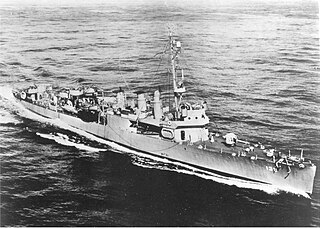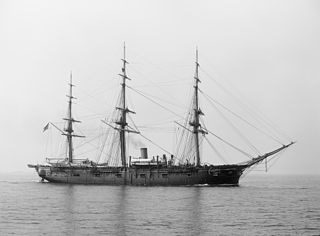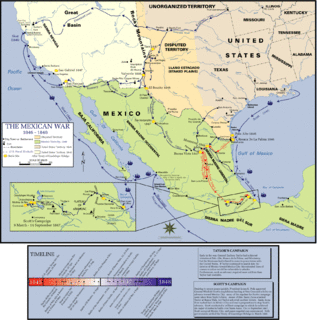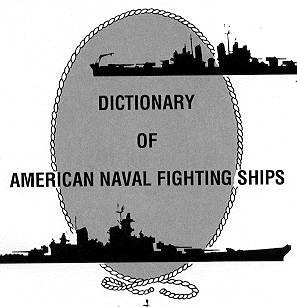| History | |
|---|---|
| Name: | USS Admittance |
| Acquired: | by seizure, 8 April 1847 |
| Out of service: | 6 May 1848 |
| Fate: | Unknown |
| General characteristics | |
| Type: | Brig |
USS Admittance was a brig in the United States Navy.

A brig is a sailing vessel with two square-rigged masts. During the Age of Sail, brigs were seen as fast and maneuverable and were used as both naval warships and merchant vessels. They were especially popular in the 18th and early 19th centuries. Brigs fell out of use with the arrival of the steam ship because they required a relatively large crew for their small size and were difficult to sail into the wind. Their rigging differs from that of a brigantine which has a gaff-rigged mainsail, while a brig has a square mainsail with an additional gaff-rigged spanker behind the mainsail.

The United States Navy (USN) is the naval warfare service branch of the United States Armed Forces and one of the seven uniformed services of the United States. It is the largest and most capable navy in the world and it has been estimated that in terms of tonnage of its active battle fleet alone, it is larger than the next 13 navies combined, which includes 11 U.S. allies or partner nations. with the highest combined battle fleet tonnage and the world's largest aircraft carrier fleet, with eleven in service, and two new carriers under construction. With 319,421 personnel on active duty and 99,616 in the Ready Reserve, the Navy is the third largest of the service branches. It has 282 deployable combat vessels and more than 3,700 operational aircraft as of March 2018, making it the second-largest air force in the world, after the United States Air Force.
Little is known about Admittance. She was an American merchant brig operating along the California coast during the Mexican–American War. The United States sloop of war Portsmouth seized this vessel on 8 April 1847 at San Jose, California, for "trading with the enemy."

California is a state in the Pacific Region of the United States. With 39.6 million residents, California is the most populous U.S. state and the third-largest by area. The state capital is Sacramento. The Greater Los Angeles Area and the San Francisco Bay Area are the nation's second- and fifth-most populous urban regions, with 18.7 million and 9.7 million residents respectively. Los Angeles is California's most populous city, and the country's second-most populous, after New York City. California also has the nation's most populous county, Los Angeles County, and its largest county by area, San Bernardino County. The City and County of San Francisco is both the country's second-most densely populated major city after New York City and the fifth-most densely populated county, behind only four of the five New York City boroughs.

The Mexican–American War, also known in the United States as the Mexican War and in Mexico as the Intervención estadounidense en México, was an armed conflict between the United States of America and the Second Federal Republic of Mexico from 1846 to 1848. It followed in the wake of the 1845 American annexation of the Republic of Texas, not formally recognized by the Mexican government, disputing the Treaties of Velasco signed by the unstable Mexican caudillo President/General Antonio López de Santa Anna after the Texas Revolution a decade earlier. In 1845, newly elected U.S. President James K. Polk, who saw the annexation of Texas as the first step towards a further expansion of the United States, sent troops to the disputed area and a diplomatic mission to Mexico. After Mexican forces attacked American forces, Polk cited this in his request that Congress declare war.

The second USS Portsmouth was a wooden sloop-of-war in the United States Navy in service during the mid-to-late 19th century. She was designed by Josiah Barker on the lines of a French-built privateer, and built at the Portsmouth Navy Yard, directly across the Piscataqua River from Portsmouth, New Hampshire. She was described as an improvement over the USS Saratoga built in the same shipyard a year earlier. The Portsmouth was launched on 23 October 1843 and commissioned on 10 November 1844, with Commander John Berrien Montgomery in command.
Commander John B. Montgomery, commanding officer of Portsmouth, took the prize into the Navy. Under the command of Lt. Joseph Warren Revere, she served until 6 May 1848. No record of her fate thereafter seems to have survived.

John Berrien Montgomery was an officer in the United States Navy who rose up through the ranks, serving in the War of 1812, Mexican–American War and the American Civil War, performing in various capacities including the commanding of several different vessels.

Joseph Warren Revere was a career United States Navy and Army officer. Also serving in the Mexican Army the grandson of Paul Revere is best known for being a Union Brigadier General during the American Civil War who was court-martialed after the Battle of Chancellorsville.










